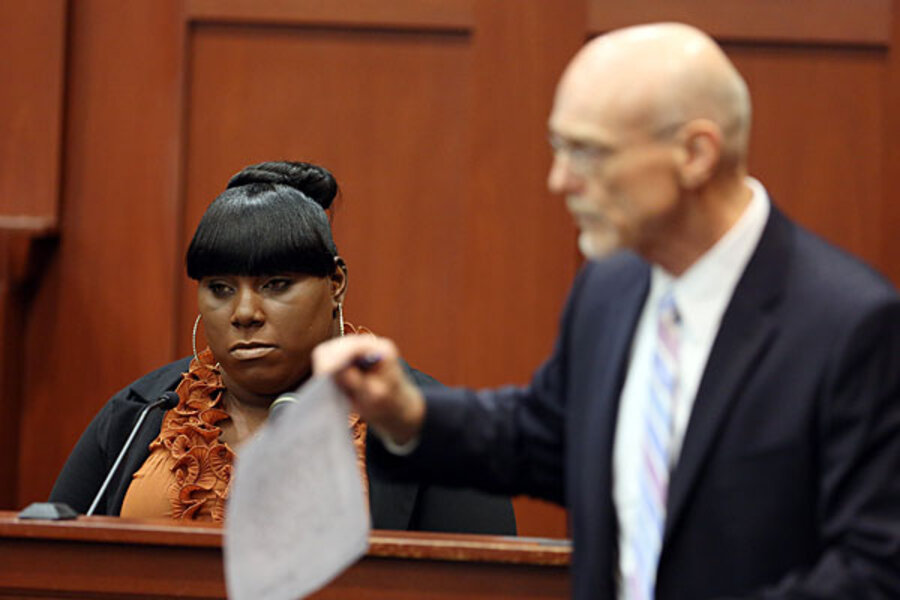Rachel Jeantel was the last person close to Trayvon to hear his voice.
Ms. Jeantel made for a reluctant witness, but because she was on the phone with Trayvon in the runup to his death, she became a key witness for the prosecution. She testified for seven hours, during which she seemed at times bored, at times perplexed, at times emotional, and occasionally rude – aspects that some explained through a cultural lens, given Jeantel’s multilingual and multicultural background.
One much-quoted sequence involved Jeantel trying to explain why her friend Trayvon’s assessment of Zimmerman as a “creepy-ass cracker” wasn’t racist. The defense was attempting to introduce the idea that it was Trayvon, not Zimmerman, who carried racial animosity into the fight.
But despite the rough patches, Jeantel’s testimony remains at the center of the state’s case: If it’s true that Trayvon said “Why are you following me for?” and “Get off! Get off!” as Jeantel testified, that suggests Zimmerman was not only the pursuer, but the instigator and aggressor of a fight that he eventually began losing, causing him, according to testimiony, to fear for his life enough to take out his gun and fire it four inches from Trayvon’s chest.







